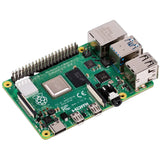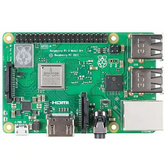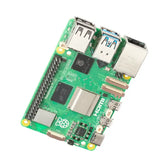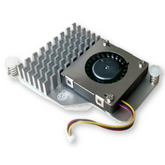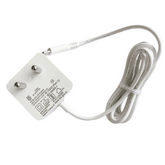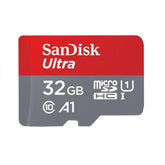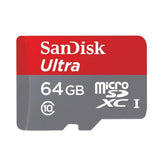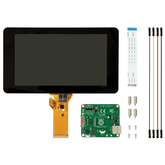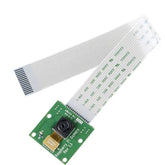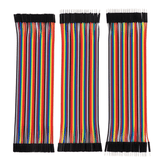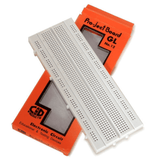Raspberry pi accessories list
Introduction
Welcome to the world of Raspberry Pi, where innovation meets affordability. In this digital era, the Raspberry Pi single-board computer has emerged as a powerful tool for enthusiasts and professionals alike. Before we delve into the intricacies of its accessories, let's provide a brief overview of the Raspberry Pi and understand why these accessories are indispensable.
The Raspberry Pi, with its compact design and budget-friendly price tag, has become a go-to choice for diverse projects. From DIY enthusiasts crafting smart home solutions to educators teaching coding in classrooms, the versatility of Raspberry Pi is unmatched.
While the Raspberry Pi alone is a technological marvel, its true potential is unlocked through a carefully curated set of accessories. These accessories not only enhance the functionality of the device but also cater to the specific needs of different projects.
Whether you're aiming to build a media center, a retro gaming console, or a network-attached storage (NAS) system, the Raspberry Pi adapts to your vision. The range of projects achievable with Raspberry Pi is vast, and the right accessories can make a significant difference in the success and efficiency of your endeavors.

The market is flooded with Raspberry Pi accessories, each claiming to be essential. Our goal is to guide you through the accessory jungle, helping you discern the must-haves from the nice-to-haves. Choosing the right accessories tailored to your project is a crucial step toward a successful Raspberry Pi experience.
Beyond mere functionality, the selected accessories should elevate the capabilities of your Raspberry Pi. Whether it's improving processing speed, expanding storage, or enabling advanced functionalities, the right accessories can transform your Raspberry Pi into a powerhouse.
Now, we'll explore specific categories of accessories, providing insights, recommendations, and considerations to empower you in making informed decisions. Buckle up as we embark on a journey to supercharge your Raspberry Pi experience!
Necessary Accessories for a Functioning Raspberry Pi
When it comes to setting up your Raspberry Pi for optimal performance, two key accessories take center stage: the Micro SD Card and the Power Supply. These components lay the foundation for a seamless computing experience, ensuring your Raspberry Pi is ready to tackle a myriad of projects.
Micro SD Card
The Micro SD Card is not just a storage device; it is the beating heart of your Raspberry Pi's operating system. Unlike traditional computers with built-in storage, the Raspberry Pi relies on these compact cards to host the OS and store essential data. Understanding the importance of the Micro SD Card is crucial for building a reliable and efficient system.

Why is it important?
The Micro SD Card serves as the primary storage medium for your Raspberry Pi, holding the key to its functionality. Without a properly functioning card, your Pi won't be able to boot, rendering it virtually useless.
Types of Micro SD Cards
- A1, A2, U1: Performance ratings that dictate speed and efficiency.
- Minimum Size: A Micro SD Card with a minimum size of 8 GB is necessary for installing the OS.
- Recommended Size: Opting for a 32 GB card provides ample space for various use cases.
Choosing the right Micro SD Card can significantly impact the performance and longevity of your Raspberry Pi. While several brands offer compatible cards, a few stand out in terms of reliability and performance.
- SanDisk Ultra Micro SD Card: A trusted brand with various capacity options.
- Other Reliable Brands: Kingston, Samsung, and Lexar are also known for producing reliable Micro SD Cards.
Choosing the Right Size:
- 8 GB: Minimum size for OS installation.
- 16 GB: Adequate for basic use cases.
- 32 GB: Recommended for versatility and future-proofing.
Power Supply
Powering your Raspberry Pi is not a one-size-fits-all endeavor. The choice between an official Raspberry Pi power supply and third-party options requires careful consideration.

Official Raspberry Pi Power Supply:
- Micro USB-B or USB-C: Depending on your Pi model.
- Ensured Compatibility: Designed specifically for Raspberry Pi devices.
- Reliability: A trustworthy choice for stable power delivery.
Power Requirements and Compatibility
Understanding the power requirements of your Raspberry Pi is crucial to avoid performance issues and potential damage to the device.
Power Requirements:
- Matching Voltage: Use a power supply with the correct voltage (5V for most models).
- Adequate Current: Ensure the power supply provides enough current for your specific Raspberry Pi model.
Compatibility Concerns:
- USB Charger Consideration: While many USB chargers can work, not all are suitable. Check output power against Raspberry Pi requirements.
- Avoiding Underpowering: Inadequate power can lead to instability and SD card corruption.
Investing in a reliable Micro SD Card and a suitable Power Supply lays the groundwork for a robust Raspberry Pi setup. These essential accessories form the backbone of your Pi's functionality, enabling it to execute projects with precision and efficiency.
Good-to-Have Accessories for Your Raspberry Pi
Enhancing the capabilities of your Raspberry Pi goes beyond the essentials. Now, we explore the "good-to-have" accessories that elevate your Raspberry Pi experience, providing added functionality and versatility.
Cases for Your Raspberry Pi
Selecting the right case for your Raspberry Pi is more than a matter of aesthetics. The raspberry pi case not only protects your device but also contributes to its overall performance and functionality.

Types of Cases:
- Standard Enclosures: Durable and protective cases for general use.
- Heat Dissipating Cases: Designed to dissipate heat effectively, preventing overheating during resource-intensive tasks.
- Open-Air Cases: Ideal for projects requiring easy access to GPIO pins and additional components.
Beyond aesthetics, some cases are engineered for efficient cooling, ensuring optimal performance under demanding conditions.
Cooling Functionality:
- Built-in Fans: Cases with integrated fans for active cooling.
- Heat Sinks: Some cases come with pre-installed heat sinks for passive cooling.
- Ventilation Design: Airflow-optimized cases enhance heat dissipation.
Coolers for Raspberry Pi
The cooling needs of Raspberry Pi models can vary, especially with the more powerful Pi 4 and 3B+. Understanding the cooling options available ensures your device operates within the recommended temperature range.

Cooling Solutions:
- Heatsinks: Small heat-absorbing components attached to key chips.
- Fan Cooling: Active cooling using small fans for increased airflow.
- Combination Cooling: Cases integrating both heatsinks and fans for optimal temperature management.
The Raspberry Pi 4 and 3B+ models, known for their enhanced performance, often require additional cooling to prevent thermal throttling and maintain stable operation.
Importance for Pi 4 and 3B+:
- Optimal Performance: Cooling prevents performance degradation during extended use.
- Extended Lifespan: Efficient cooling contributes to the longevity of your Raspberry Pi.
Powered USB Hub
When your project demands multiple USB devices, a powered USB hub becomes a valuable accessory. It not only expands connectivity but also ensures stable power distribution, avoiding potential issues related to power shortages.
Avoiding Power-Related Issues:
- Stable Power Supply: Powered hubs prevent voltage drops, ensuring consistent power to connected devices.
- Overcurrent Protection: Safeguards against excessive power draw, protecting both your Raspberry Pi and connected peripherals.
Choosing the right powered USB hub involves considering factors such as power output, port quantity, and design. Here are key considerations to guide your selection.
Recommendations for USB Hubs:
- Adequate Power Output: Ensure the hub provides sufficient power for your connected devices.
- Number of Ports: Select a hub with an appropriate number of USB ports for your project.
- Compact Design: Opt for a compact and well-designed hub for ease of use.
External SSDs
For users seeking enhanced storage and faster data access, an external Solid State Drive (SSD) offers a compelling solution. This section explores the advantages and considerations of integrating an SSD with your Raspberry Pi.

Improving Storage and Speed:
- High-Speed Data Transfer: SSDs provide faster read and write speeds compared to traditional microSD cards.
- Increased Storage Capacity: External SSDs offer higher storage capacities, ideal for data-intensive projects.
An exciting feature of Raspberry Pi 4 is the ability to boot directly from an external USB drive. This section guides you through the process, unlocking improved performance and reliability.
Booting from USB Drive:
- Enhanced Performance: Faster boot times and overall system responsiveness.
- Reduced Wear on microSD Card: External SSDs alleviate the strain on the microSD card, prolonging its lifespan.
USB to Ethernet Adapter
Transform your Raspberry Pi into a versatile home router by adding a USB to Ethernet adapter. This section explores the benefits of this setup and provides recommendations for compatible adapters.

Raspberry Pi as a Home Router:
- Stable Network Connection: Ethernet connectivity ensures stable and reliable networking.
- Customizable Router Functions: Utilize Raspberry Pi for network management and customization.
Choosing a compatible USB to Ethernet adapter involves considerations such as compatibility, speed, and driver support. Here are recommendations to guide your selection.
Recommended Adapters:
- Plug-and-Play Compatibility: Opt for adapters with seamless compatibility with Raspberry Pi.
- Gigabit Ethernet Support: Choose adapters that support Gigabit Ethernet for faster data transfer.
- Driver Availability: Ensure the adapter has readily available drivers for Raspberry Pi.
These "good-to-have" accessories—cases with cooling functionality, effective coolers, powered USB hubs, external SSDs, and USB to Ethernet adapters—offer additional features and functionalities, empowering you to explore advanced projects with your Raspberry Pi. Selecting the right combination of these accessories contributes to a customized and optimized Raspberry Pi experience.
Best Accessories for Tinkerers
Delve into the world of advanced Raspberry Pi projects with accessories tailored for tinkerers. Unleash your creativity and elevate your tinkering experience with these exceptional accessories.
USB to TTL Serial Cable
When troubleshooting boot issues on your Raspberry Pi, a USB to TTL Serial Cable becomes an invaluable tool. Explore the diagnostic potential and uncover the recommended cables and adapters for seamless debugging.

Diagnosing Boot Issues:
- Serial Connection: Establish a direct connection to the Raspberry Pi's serial console for detailed diagnostics.
- Error Log Analysis: Decode boot error messages and identify issues hindering a successful startup.
- Interactive Debugging: Gain real-time access to the command-line interface during boot for interactive problem-solving.
Selecting the right USB to TTL Serial Cable ensures a smooth diagnostic process. Discover the recommended cables and adapters that align with your tinkering needs.
Recommended Cables and Adapters:
- FTDI Chipset Cables: Reliable cables with FTDI chipset for consistent performance.
- 3.3V Logic Level Support: Ensure compatibility with Raspberry Pi's 3.3V logic levels.
- Durable Connectors: Opt for cables with robust connectors for a secure and stable connection.
An External Screen
Enhance your Raspberry Pi projects by incorporating an external screen or raspberry pi display. Uncover the myriad uses and explore the compatibility aspects, opening doors to interactive and visually rich applications.

Uses and Compatibility:
- Portable Workstation: Transform your Raspberry Pi into a portable workstation with a dedicated screen.
- Interactive Projects: Develop projects with touch input support for interactive and engaging user experiences.
- Extended Display: Increase productivity by extending your desktop workspace onto an external screen.
For projects demanding touch interaction, selecting a compatible screen is crucial. Delve into the world of displays that seamlessly support touch input, expanding the possibilities of your tinkering endeavors.
Displays Supporting Touch Input:
- Capacitive Touchscreens: Responsive and accurate touchscreens for precise input.
- HDMI Touch Displays: Easily connectable via HDMI for a hassle-free setup.
- Customizable Interfaces: Explore screens with programmable touch interfaces for tailored applications.
Cameras
Capture the essence of your projects with Raspberry Pi cameras. From surveillance applications to artistic endeavors, understand the diverse applications and explore the types of cameras available.

Applications and Types:
- Security Surveillance: Utilize cameras for monitoring and surveillance applications.
- Photography and Videography: Unleash your creativity with high-quality image and video capture.
- Computer Vision Projects: Integrate cameras into computer vision projects for object detection and recognition.
Choosing the right camera module is paramount for optimal performance. Navigate through popular camera modules and select the one that aligns with your tinkering aspirations.
Popular Camera Modules:
- Raspberry Pi HQ Camera: High-quality images with interchangeable lenses for versatility.
- NoIR Camera: Infrared-sensitive camera for low-light and night vision applications.
- Camera Module V2: Compact and versatile camera module suitable for a wide range of projects.
Jumper Wires
Facilitate GPIO connections with the indispensable accessory, jumper wires. Understand the significance of these wires in tinkerers' toolkits and explore the best practices for obtaining and using jumper wires effectively.

Essential for GPIO Connections:
- Breadboarding Projects: Simplify connections on a breadboard for prototyping.
- Flexible Wiring: Easily maneuverable wires for intricate and customized circuit layouts.
- Quick Prototyping: Expedite the prototyping phase by swiftly connecting and rearranging components.
Selecting and using jumper wires involves considerations for flexibility, length, and connector types. Master the art of obtaining and using jumper wires for seamless tinkering experiences.
Obtaining and Using Jumper Wires:
- Male-to-Male Wires: Ideal for connecting components on a breadboard.
- Female-to-Male Wires: Facilitate connections between GPIO pins and external components.
- Wire Gauge Considerations: Choose the appropriate wire gauge for different current and voltage requirements.
Breadboards
Unleash your creativity in electronic prototyping with the versatile breadboard. Dive into the functionalities of breadboards, understanding how they facilitate connections for your tinkering projects.

Connecting Electronic Accessories:
- Component Placement: Easily position and connect electronic components for experimentation.
- Temporary Prototyping: Expedite project development by creating temporary circuits on the breadboard.
- Reusable Platform: Repeatedly modify and rearrange circuits without soldering for iterative design.
Breadboards come in various sizes and designs. Explore the available options and choose the one that aligns with the scale and complexity of your tinkering projects.
Exploring Available Options:
- Full-Size Breadboards: Ample space for larger projects with numerous components.
- Mini Breadboards: Compact and portable for smaller-scale prototyping.
- Solderless Breadboards: Facilitate quick and solder-free circuit assembly for rapid experimentation.
Various HATs (Hardware Attached on Top)
Elevate your tinkering experience by exploring the realm of Raspberry pi Hardware Attached on Top (HAT) accessories. Discover how HATs expand Raspberry Pi functionality, enabling advanced projects and augmenting your tinkering toolkit.

Expanding Raspberry Pi Functionality:
- Plug-and-Play Integration: Easily attach and detach HATs for seamless integration with your Raspberry Pi.
- Specialized Functions: Access specialized features such as sensors, displays, and communication modules.
- Community-Developed HATs: Explore a diverse range of HATs developed by the Raspberry Pi community for various applications.
The market offers a plethora of HAT options, each catering to different needs. Navigate through popular HATs and choose the ones that align with your tinkering goals.
Popular HAT Options:
- Sense HAT: Equipped with environmental sensors, an LED matrix, and a joystick for diverse projects.
- PiTFT HATs: Compact touchscreen displays for interactive and portable projects.
- Automation HAT: Ideal for home automation projects with relay and analog channels.
Embark on an exciting journey of tinkering with these best accessories. From diagnosing boot issues to expanding functionality with HATs, these accessories are designed to fuel your creativity and empower you to bring your Raspberry Pi projects to new heights.
Conclusion
As we wrap up this comprehensive guide to Raspberry Pi accessories, let's reflect on the key takeaways and encourage a future filled with exploration and creativity.
The essential accessories for your Raspberry Pi, we've meticulously covered a diverse range catering to different user needs. From the fundamental micro SD card and power supply to advanced accessories like cameras and Hardware Attached on Top (HATs), each component plays a vital role in optimizing your Raspberry Pi experience. Whether you're a beginner setting up your first Pi or an experienced tinkerer diving into complex projects, this guide ensures you're equipped with the necessary tools for success.
Raspberry Pi is not just a tiny computer; it's a canvas for creativity and exploration. As you embark on your Raspberry Pi journey, let your imagination run wild. Experiment with projects, modify accessories, and push the boundaries of what's possible. The encouraging ecosystem around Raspberry Pi thrives on innovative ideas and projects, and you have the power to contribute to it.
We express our deep appreciation for Raspberry Pi's versatility and the vibrant community that surrounds it. The journey doesn't end here; it evolves with each new project and idea. As you set forth on your Raspberry Pi endeavors, we invite you to share your experiences, suggestions, and comments. Your input enriches the collective knowledge and inspires fellow enthusiasts.
In the spirit of continuous learning and innovation, may your Raspberry Pi projects be boundless, and your exploration ever-inspiring.





